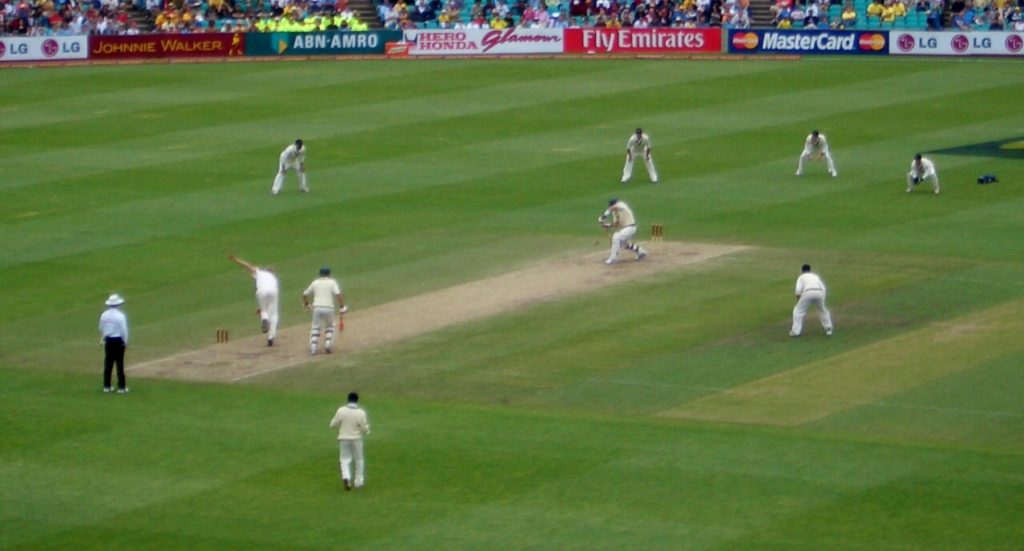Everyone seems to be an expert or have an opinion on why injuries are occurring so regularly with fast bowlers these days.
Jock Campbell, a leading expert in athlete high performance, strength and conditioning, gives his insight into the injuries of fast bowlers.
Kallis and Pattinson breaking down in this Test has heightened this again. From stress fractures in the lower back, to ankle problems, soft tissue hamstring injuries and even side strains. Most of the advice seems to be very reactive, hysterical and extreme. An injury to fast bowlers is not a new thing, and particularly to young fast bowlers. So why now does it seem like its happening more regularly. Its the high-octane part of cricket where every fibre and joint of the body is tested to the extreme and high pace and effort is expected year round. So I thought Id go through what the current stressors are for a fast bowler and what are the requirements and risk factors or injury, injury prevention and great performance.
Workload
It’s basically how much a bowler bowls in practice and matches, and is looked at in terms of balls bowled per day, week, month and year. There’s been enough research done in this area to have some good recommendations, but not enough on the right type of bowlers to have all the answers. What we do know is that if we have large increases in the volume of bowling in a short period of time, we increase the chance of causing problems to the bowler, which is common for any physical activity. In the case of back to back tests where Siddle has just bowled over 60 overs in this Adelaide Test in a herculean performance, he is in the dangerzone now having to back up for this next Test starting in Perth on Friday.The research clearly shows back to back Tests increase this injury risk, take note of any of these situations the Boxing Day and New Years test in Australia and see how many times bowling attacks from both teams are intact at the end.The cricket authorities know this, but due to packed schedules, TV rights, IPLwindows and future tours programs we are told this is a must. They cant have it both ways; cricket authorities worldwide know the risks and must accept the outcomes of a few injuries.
Anomalies
The recommendations from the bowling workload studies are to reduce risk of bowler injury bowlers should regularly bowl no more than 180 balls per week and no less than 2 times per week and no more than 3.5 times per week. Unfortunately in a test match like Peter Siddle has done you might bowl more than this in one innings. For great performance you need to bowl top pace in a test match every spell if as a fast bowler you want to be the best. Its a tough balance between peak performance and injury prevention.
At the end of the day a bowler needs to have conditioned himself enough to handle the volumes he will bowl during test matches, this cannot be developed over night and must be increased gradually over time.
Age
Most young express fast bowlers will have injury problems early. Their bones aren’t fully hardened, muscles not specifically strong or well conditioned enough, they maybe able to bowl fast, but not to handle year round professional cricket. Pat Cummins having only played around 8 first class matches before being selected for Test cricket is a classic example. No doubt he is talented enough, but recent history has shown us he is not physically ready to handle the rigours of continuous international cricket. These kids need to be able to build up their bowling condition in combination with their physical development gradually overtime. They also must realise cricket is a year around proposition, there is no having two or 3 months off from bowling per year, they must stay in great shape year around!
Injury Rates
For a long time now cricket has been a year round proposition. The longest period I remember having back at home in one stint in the 5 years I was with the Aussie team was 5-6 weeks, and that only happened once. This packed schedule isn’t going to change. Injury rates to Australian Cricketers were the lowest in recorded history through 2003/2004 and 2004/2005 seasons and these bowlers Brett Lee, Dizzy Gillespie, Glenn McGrath, Andy Bichel, Michael Kasprowicz worked extremely hard on their condition, recovery, strength, bowling volumes and speed training and speed work. They all bowled through pain at times and despite doing everything right sometimes still got injured. Thats fast bowling life, and it’s how hard and well you work out of those periods that brings back stronger and more hardened cricketers.
We had some magnificent physios that worked around the clock with these players to ensure they’d get back on the park – Errol Alcott, Patty Farhart to name a couple. But the last word on sacrifice goes to Brett Lee from that era, when he had never got through a full professional season without missing time through injury. I showed him a study on 20 different professional sports that proved as a professional sportsman you are 100% less likely to suffer and injury as a non-drinker as opposed to a drinker that’s alcohol. He gave up drinking for a whole year and then got through his first full year without injury.
Pushing the Boundaries is Brett Lee’s new DVD on his career and with a large section that we did together on conditioning for fast bowlers. Many of the training techniques, both with bowling, conditioning, speed and strength work we successfully did through his career are on the DVD and give an insight into what a fast bowler needs to do to reach their physical bowling peak and prevent injuries.
T20
The introduction of T20 tournaments around the world has players now not only contracted to play for their country, but also 2-3 T20 Franchises around the world,that operate outside the national set up. This has caused problems as bowlers through this period have to take the responsibility of keeping all their training workloads up to keep them conditioned for Test cricket, as bowling 4 overs in a match every 3 days isn’t enough to do it. This is a recent situation and will take some time to work out. Kallis seems to have suffered from this, playing in the champions league and before that the T20 World Cup then coming to Australia, where SA had only 1 three-day trial match which he missed through illness. First test he bowled a stack of overs that his body wasn’t accustomed to and then sustained a soft tissue injury early on in this test. Two problems, two to three months of T20 preparation, followed by poor SA preparation by only organising one 3 day trial match before the first test.
Condition
As Peter Siddle showed in the second Test in Adelaide, remarkable condition both aerobically and anaerobically to get through 60-70 overs in a Test match and maintain bowling speed throughout that period in 35 degree heat and add value in the field as well. This doesn’t happen by accident and this area needs to be worked hard on year round.
Strength/Power
To be able to firstly be able to impart enough force to bowl fast, these fast bowlers need to have great specific explosive power and to do this over and over again. The bowlers also need the joint stability, and muscle strength to be able to handle the massive forces of impact each time they run in hit their delivery stride, slam their back and front foot down on a rock hard pitch and then let the ball fly at maximal velocity and rapidly slow down after delivery. So great eccentric strength is required for huge breaking forces after the ball has been released. Also required is great strength and power through the full range of the running technique to aid in building speed and efficiency
Running
Cricket is a running based game, and no one on the field runs more distance or often-in cricket than the fast bowlers. The Bupa Tracker results show that Brett Lee runs in at around 85% of his max speed every ball, and Dale Steyn even quicker at between 90-95% of his max speed when he bowls. Fast bowlers also cover between 20-30km per day in the field, with around half of this running. So they need to be highly conditioned and efficient runners to be able to maintain performance through a five-day test match. The Aussie cricketers and particularly the fast bowlers when I was with the Australian team did great amounts of speed work, both with technique and speed condition. MCGrath, Lee,Gillespie, Bichel and Kasprowicz worked very hard on this. Even the great D.K.Lillee used a sprint coach through his career and the great West Indian bowlers of the 80’s and 90’s did a lot of running. It’s certainly not the only thing, but a very important component.
Recovery
Recovery between matches, between training sessions and from travel needs to be spot on. This begins even before the players come off the training paddock or field in a match with fluid replenishment, stretch downs to return the muscle to its resting length, then the right foods, active recovery to flush out waste products which reduces muscle soreness and recovery time, and the list goes on. Out of over 20 scientifically proven recovery techniques that are simple to do these must be given a big priority so the player can get the most out of every training session, and give the most he can in every match.
There are so many reasons why fast bowlers keep getting injured, not only the Australians, but also around the world. Bowling is an unnatural activity, one side of the body is favoured,and immense forces are generated through muscles, bones, tendons and joints on the very hard surfaces of the wicket. Brett Lee has fifteen times his bodyweight going through his front foot in his delivery stride, which imparts incredible stress on his ankle (6 operations), knees and back (2 stress fractures), this compared to McGrath who bowled about 15km/hr slower than Lee with around twelve times his body weight going through his front foot. Brett also has maintained his pace over a career spanning around 15 years and has set the benchmark very high for quick bowlers around the world as he has maintained his pace day after day, spell after spell, for all those years. So I in part blame him for setting such high standards for others to try and emulate.
Originally posted jockathletic.com 27th November 2012























